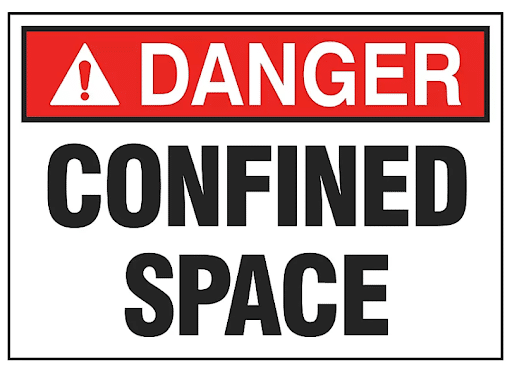
26 Sep Behind the Scenes: The Technology and Techniques Driving Confined Space Rescues in Detroit
In the high-stakes world of confined space rescues, technology and training play crucial roles in ensuring the safety of both the rescuers and those they are trying to save. This article delves into the advanced confined space technology used by PROs Services in Detroit, highlighting the equipment, techniques, and training that make these high-risk operations successful.
The Role of Advanced Technology in Confined Space Rescues
Confined space rescues involve unique challenges due to the restricted access and hazardous environments. Advanced technology is essential for navigating these challenges and executing successful rescues. Here’s how PROs Services utilizes cutting-edge technology to enhance their operations:
Monitoring Devices
- Gas Detection Monitors: These devices are crucial for detecting harmful gases and ensuring the safety of both the rescuers and the individuals in the confined space. They measure levels of oxygen, flammable gases, and toxic substances. Continuous monitoring allows for real-time data and alerts, enabling timely evacuation if dangerous levels are detected.
- Atmosphere Testing Equipment: Prior to entry, the atmosphere in a confined space is tested to ensure it is safe. This includes checking for oxygen levels, the presence of hazardous gases, and potential contaminants. Accurate atmosphere testing helps prevent dangerous conditions and ensures a safer rescue environment.
Specialized Breathing Apparatus
- Self-Contained Breathing Apparatus (SCBA): SCBAs provide breathable air in environments where the air is contaminated or oxygen-deficient. They are essential for rescuers working in confined spaces where air quality may be compromised. SCBAs ensure that rescuers can breathe safely while performing their duties.
- Air-Purifying Respirators (APRs): APRs filter out contaminants from the air, providing protection against specific hazardous substances. They are used in situations where the air quality can be improved with proper filtration.
Communication Equipment
- Two-Way Radios: Effective communication is critical in confined space rescues. Two-way radios allow rescuers to stay in constant contact with each other and with command centers. These radios are designed to work in challenging environments where communication signals might be obstructed.
- Headsets and Communication Systems: Advanced headsets and communication systems improve clarity and reliability in noisy or confined environments. These systems ensure that instructions and information are transmitted accurately and without interference.
Rescue Tools and Equipment
- Rescue Tripods and Winches: Rescue tripods provide a stable anchor point for hoisting and lowering individuals. Winches are used to lift or lower victims and rescuers, making it easier to extract individuals from confined spaces safely.
- Cutting and Prying Tools: Specialized tools such as hydraulic cutters and pry bars are used to access tight spaces and perform necessary extrications. These tools are designed to work in confined areas and help rescuers overcome physical barriers.
Advanced Techniques for Effective Confined Space Rescue
Technology alone is not enough to ensure successful confined space rescues. Advanced techniques and training are equally important. Here’s how PROs Services employs cutting-edge techniques to enhance their rescue operations:
Training and Simulation
- Realistic Drills: Regular training drills simulate various confined space scenarios, allowing rescuers to practice their skills in controlled environments. These drills include scenarios such as hazardous atmospheres, entrapments, and complex extrications.
- Scenario-Based Training: PROs Services uses scenario-based training to prepare rescuers for a wide range of potential emergencies. This approach helps them develop problem-solving skills and adapt to unexpected situations.
Risk Assessment and Planning
- Pre-Rescue Assessments: Before entering a confined space, a thorough risk assessment is conducted. This includes evaluating potential hazards, determining the best entry and exit points, and planning the rescue approach. Proper planning ensures a coordinated and efficient response.
- Continuous Monitoring: During rescues, continuous monitoring of environmental conditions and the health of the rescuers is essential. This allows for quick adjustments to the rescue plan and ensures ongoing safety.
Coordination and Command
- Incident Command Systems: Effective coordination is key to successful rescues. PROs Services uses incident command systems to manage operations, allocate resources, and communicate with all team members. This system ensures a structured and organized approach to each rescue mission.
- Team Coordination: Rescuers work in teams to execute complex operations efficiently. Coordination between team members is facilitated by advanced communication systems and well-defined roles.
Improving Safety Outcomes and Response Times
The integration of advanced technology and techniques significantly improves safety outcomes and response times in confined space rescues. Here’s how:
- Enhanced Safety: By using state-of-the-art equipment, PROs Services ensures that rescuers are protected from hazardous conditions and can operate effectively. This reduces the risk of accidents and injuries during rescues.
- Faster Response: Advanced technology such as real-time monitoring and efficient rescue tools streamline the rescue process. This leads to faster response times, which is critical in emergencies where every second counts.
- Effective Rescue Operations: The combination of technology and training ensures that rescues are conducted smoothly and efficiently. This results in successful outcomes and minimized risks for both victims and rescuers.
Conclusion
Confined space rescues in Detroit require a combination of advanced confined space technology and specialized techniques. PROs Services’ use of cutting-edge equipment, realistic training, and effective coordination ensures that they are prepared for even the most challenging rescue scenarios. By continually improving their technology and methods, PROs Services enhances safety and efficiency in confined space rescues, solidifying their reputation as leaders in emergency response.
For businesses and organizations in Detroit, understanding and leveraging these advancements can make a significant difference in handling confined space emergencies effectively. With PROs Services at the forefront of confined space rescue technology, you can trust that your safety and rescue needs are in expert hands.
Ensure your confined space rescue operations are equipped with the latest confined space technology and techniques by partnering with PROs Services. Since 1954, we’ve been leading the way in Detroit with advanced equipment, comprehensive training, and expert rescue operations. Contact us today to learn how our innovative solutions can enhance your safety and response capabilities.

